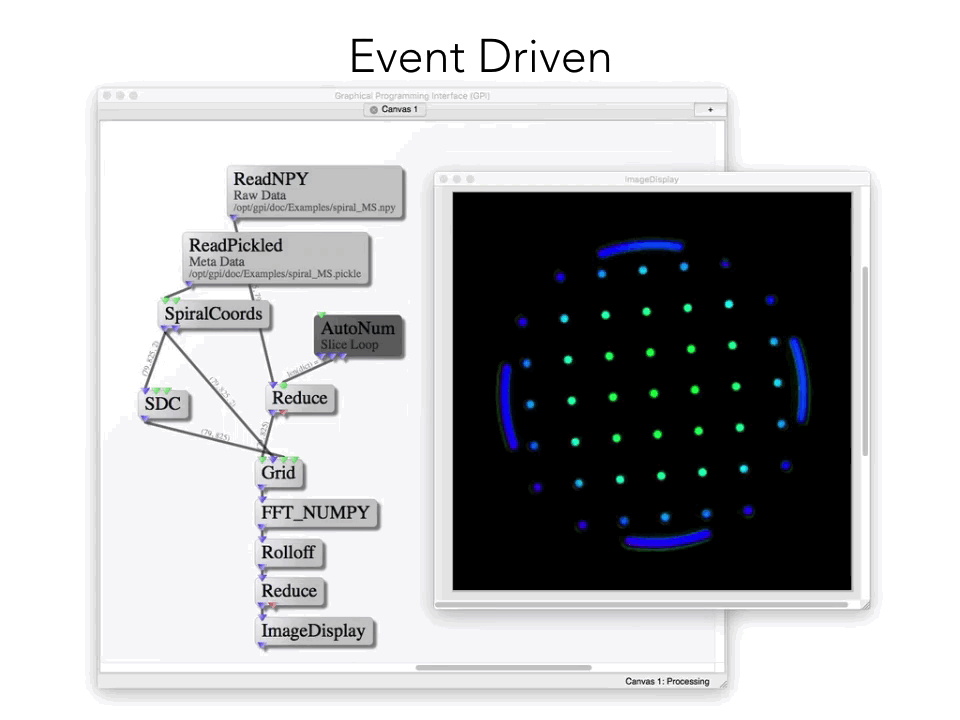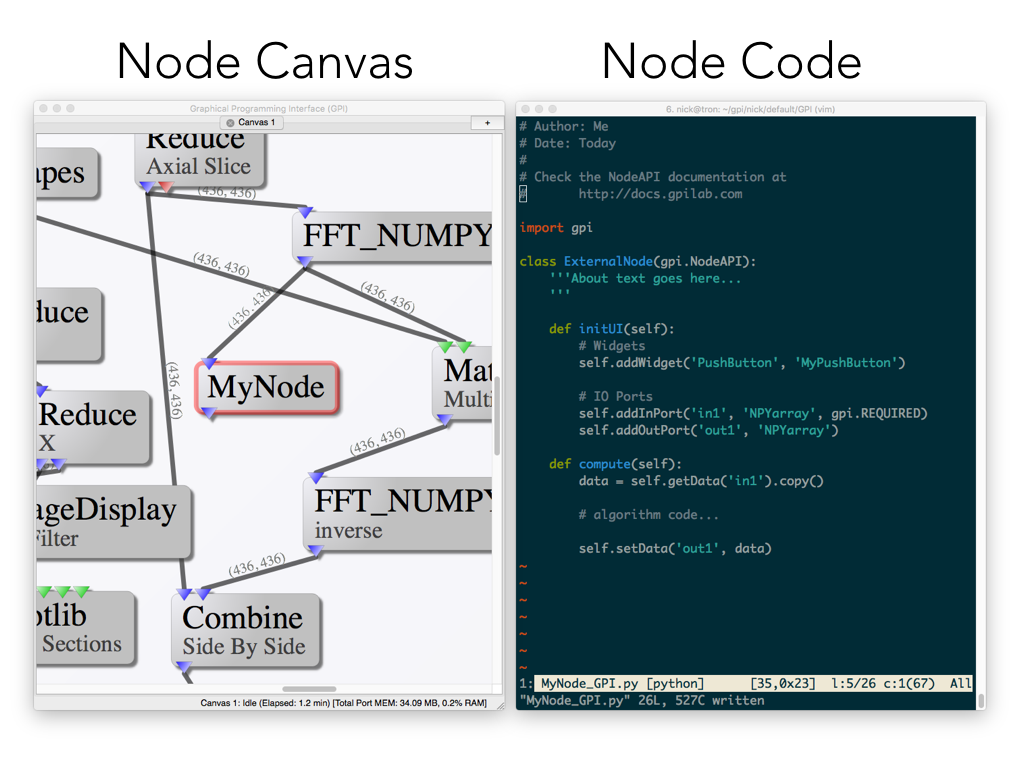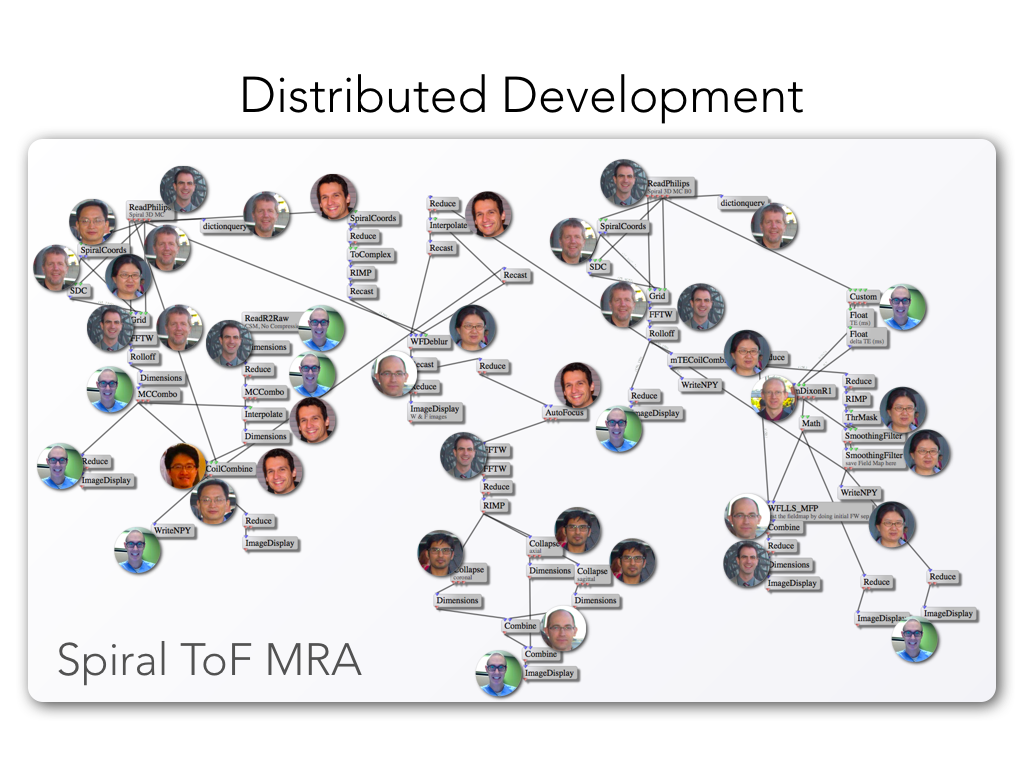GPI is a development environment for scientific algorithms
GPI provides a visual workspace for assembling algorithms. Algorithm elements (i.e. nodes) can be linked together to form a flow diagram. Each node is executed according to the hierarchy of the diagram.

Integrated Development Environment
GPI can be thought of as an integrated development environment for Python. GPI nodes can leverage the scientific computing capabilities of numeric libraries such as Numpy and Scipy. The goal of GPI is to minimize the barrier to organizing and developing complex scientific algorithms (i.e. in the form of GPI nodes). To this end, GPI provides a GUI for a basic set of tools to visualize data, manipulate data and I/O for common scientific data formats.

Collaboration Platform
At the node level, the common API and UI elements allow other developers to easily integrate and use your code. Node libraries can be easily developed among multiple users via a revision system without having to manage the GPI framework. This allows algorithm developers to pick and choose existing nodes (either stock or from their collaborators) and focus on the task of prototyping their new algorithm.

Teaching Tool
The visual and modular nature of GPI allows complex algorithms to be easily examined and explored. Users can visualize the data flow at each point in an algorithm and tap any point to start their own algorithm. This feature allows concise communication of your work with your collaborators as it provides an intuitive mechanism for others to start interacting with your research.

Reconstruction Framework
The GPI framework is being developed for Magnetic Resonance Imaging (MRI) research. This means the thrust of the core toolbox is primarily geared towards k-space image reconstructions. However, the GPI framework is simply an event driven pipeline that can be used for any data processing. We also use it for spin physics simulations and simulating k-space data.
